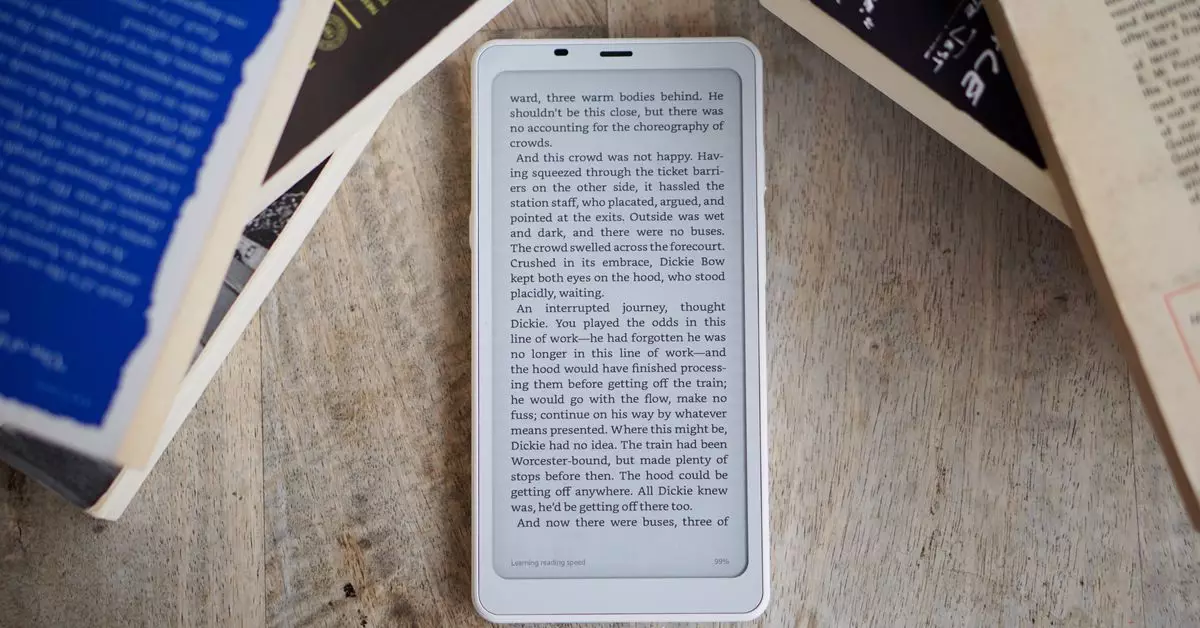In an era where e-readers are evolving and becoming more versatile, the Boox Palma 2 has managed to stir both excitement and disappointment among its users. This article delves into the strengths and weaknesses of the newly released e-reader from Onyx, assessing how it measures up against its predecessor and the competition while exploring deeper implications for the consumer tech landscape.
The Boox Palma 2 comes with the same design blueprint as its predecessor, which raises an interesting yet somewhat vexing question: Is consistency a strength or a hindrance? On one hand, the device retains the appealing smartphone-sized structure that has garnered a loyal following. The lightweight and portable nature of the Palma 2 makes it easy to carry around, providing users with a seamless reading experience—an essential criterion for any e-reader. However, the unchanged aesthetics leave little room for excitement. This lack of innovation sets a bittersweet tone, as users expected at least some form of evolution in terms of design.
The 6.3-inch E Ink Carta display continues to offer crisp and clear visuals, making reading enjoyable in various lighting conditions. Yet, the quality of the materials used in the device’s construction leaves much to be desired. The plastic body feels fragile and raises questions about durability over time. While the Palma 2 succeeds in being a compact reading device, the overall build quality hampers its potential appeal.
One of the selling points for the Palma 2 lies in its upgraded processing power, featuring a newer octa-core CPU and Android 13. In theory, this should facilitate a smoother user experience, enhancing tasks ranging from reading e-books to navigating through the Play Store for app usage. However, a critical scrutiny reveals that users might not notice any significant performance improvement during everyday activities. The e-reader still suffers from lagging app launches, unregistered taps, and sluggish graphics performance when it comes to gaming or video playback.
While a leap from an outdated chip to a relatively newer one seems commendable, the perception of speed remains subjective and doesn’t drastically improve user experience. Essentially, the Palma 2’s performance benchmarks position it as a mid-range smartphone from a couple of years back, which inadvertently colors user expectations. For a device poised as a cutting-edge e-reader, falling behind the curve in performance is disheartening.
Despite the Palma 2’s many upsides—such as the 16-megapixel camera for document scanning and a fingerprint reader for security—many users feel that much more could have been accomplished. The fingerprint sensor, while a step in the right direction, is sluggish and reminiscent of half-hearted efforts to modernize. Additionally, the entire package fails to embrace options that could better cater to a tech-savvy audience. For instance, incorporating a SIM slot could transform the Palma 2 into a minimalist smartphone, which would help it compete more effectively in a crowded market.
Moreover, the potential for refining Android’s user interface is largely overlooked. The existing operating system could benefit from better organization, additionally removing unnecessary pre-installed apps to streamline the user experience. The essence of a good e-reader rests not only in hardware, but in software that is intuitive and seamless. The Palma 2 falls short here, missing an opportunity to set itself apart from other products.
It’s intriguing to consider the Palma 2’s long-term viability within a crowded market. Similar to Kindle, which has built a legacy even without substantial advancements year-on-year, the Palma 2 could solidify its place if users perceive it as reliable. This strategy, however, hinges on the principle that existing customers will eventually upgrade due to obsolescence or accidents.
Users are clearly anxious for competition to emerge in this niche, where nothing has truly captured the essence of a smartphone-sized E Ink device with app capabilities, creating a vacant space that remains largely unfilled. The e-reader space could benefit significantly from improved alternatives that can challenge Onyx’s position. However, if the status quo remains unchallenged, the Palma 2 may continue to coexist in a realm of mixed reviews, praised for its utility but condemned for unmet potential.
The Boox Palma 2 stands as a testament to the challenges of innovation. While it embodies a unique reading experience, it is overshadowed by a structure that feels all too familiar. The simplification of design and the stagnation in performance ultimately highlight a missed opportunity for growth. Although the Palma 2 fulfills basic reading and multimedia functions adequately and offers a distraction-free environment, it simultaneously begs for the kind of thoughtful enhancements that would elevate it from a mere e-reader to a veritable companion for the modern user.

